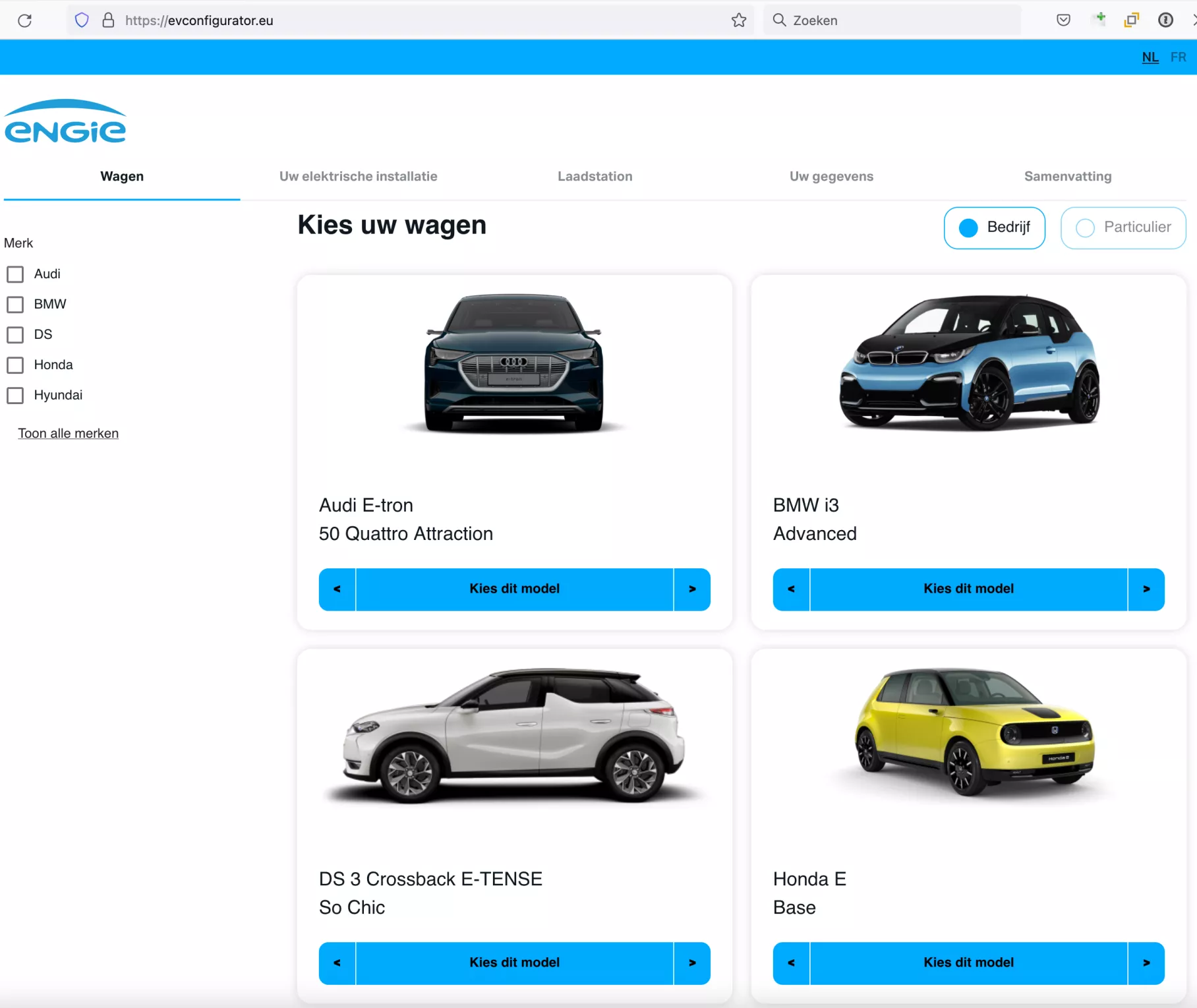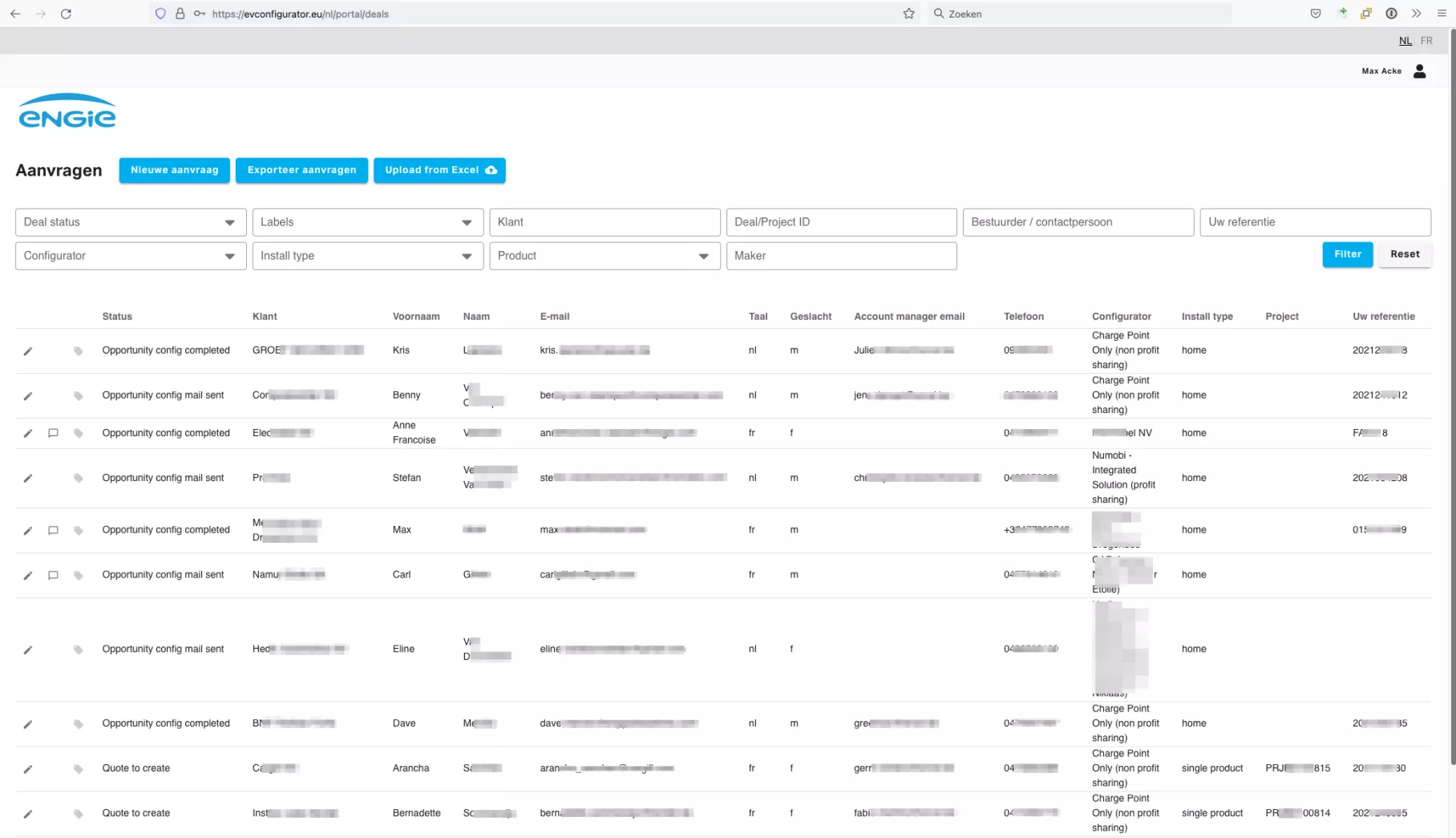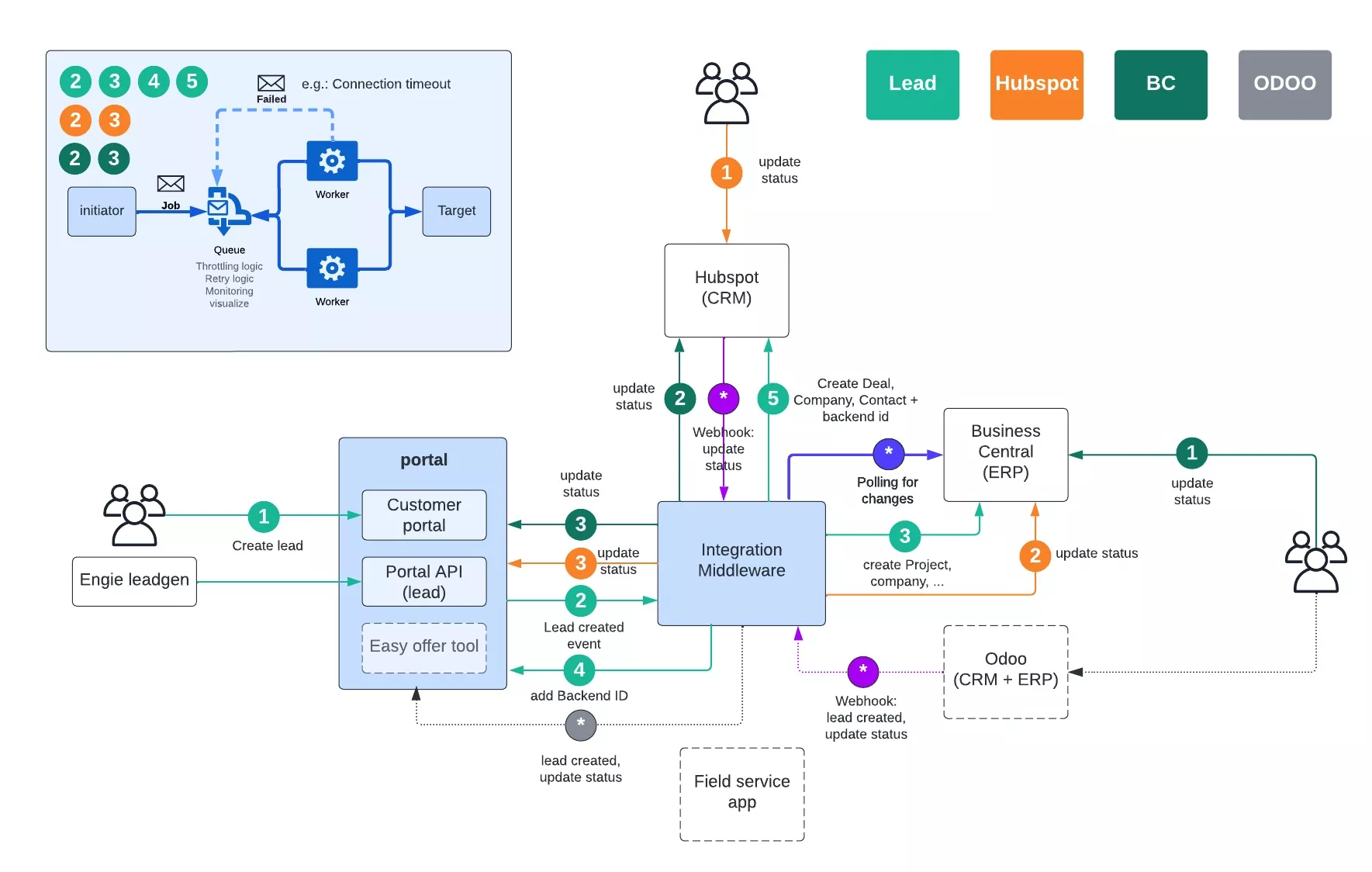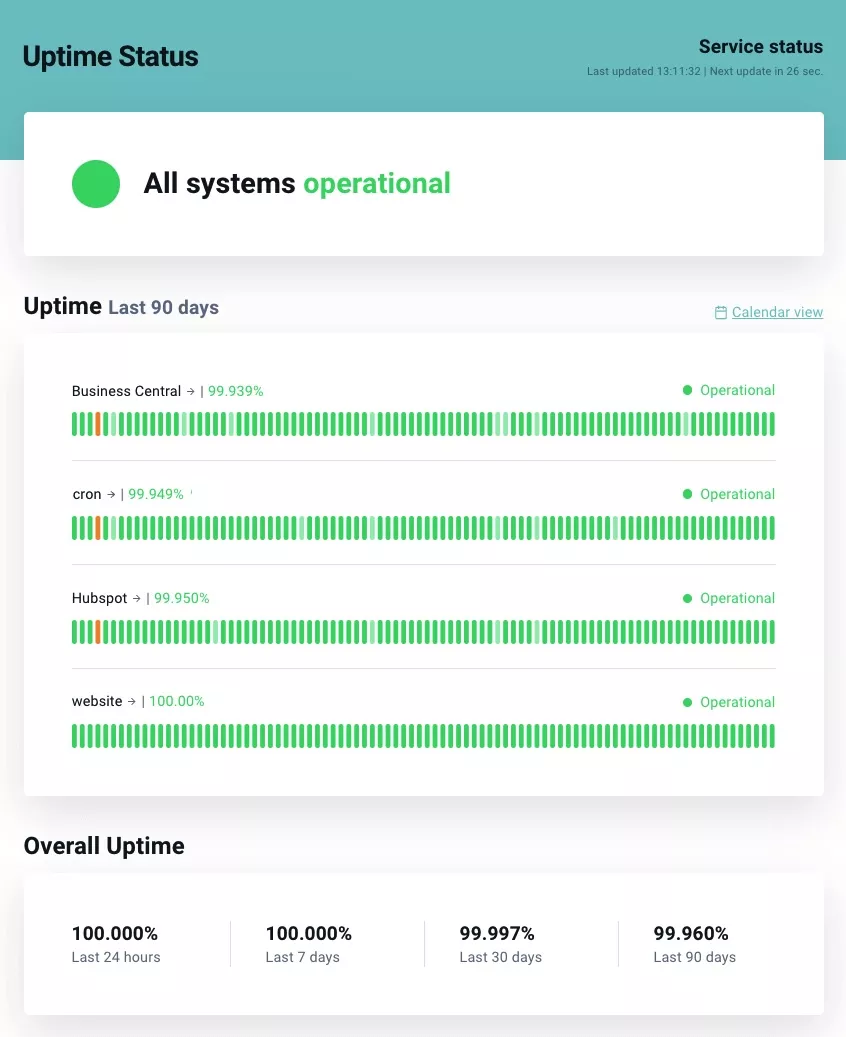engie
Choosing and installing a charging station: a streamlined digital process
In the transition to electric cars, the need for charging stations is only increasing. To manage this process properly, a scalable digital solution was needed.

goal
-
help a customer find the right charging station for his electric car (configurator)
-
help all stakeholders manage the complete process (portal)
-
optimize internal workflow by synchronization off all data between different systems
we developed
-
applications for interaction with the various stakeholders
-
management tool to flexibly add new customers
-
api connection to ERP: products, offers, invoices
-
api connection and integration of CRM and Marketing Automation
The process
When a company makes an electric company car available to an employee, there are many steps to go through:
- choice of an electric car
- selection of a charging station that suits the car on the one hand and the existing electrical installation on the other hand
- on-site inspection in preparation for the installation of the charging station
- preparation of a quotation + approval
- ordering the car and the charging station
- delivery of the car and installation of the charging station
- requesting payment details for reimbursement of charging costs by the employer
- preparing an invoice + subscription for a charging card
Stakeholders and users with their own rights and interfaces
In such a process, several parties are involved:
- the company with its fleet manager that makes a company car available to its employee
- the employee himself who chooses a car and needs a charging station for it
- the leasing company that supplies the car
- the installation company (sales+installation team) that supplies the charging station infrastructure, charging card and reimbursement platform
Analysis and development: short time to market
In order not to lose time in this competitive market, we opted for an agile approach for this project to realize the large (not yet 100% clear) scope in an efficient manner.
At the start, we first defined the different stakeholders. We then brainstormed with the customer about the different scenarios and requirements for the platform and developed them into an MVP.
An extremely simple flow and a user-friendly user interface were therefore the focus for developing the platform. In the long term, different partners with different systems and technologies should be able to connect to this.
With this knowledge in mind, we made a division into must haves, should haves and nice to haves. After developing an initial series of wireframes and a design, we were able to start developing the MVP (Minimum Viable Product) and go live shortly afterwards.
After going live, we held weekly workshops with the customer to continue adding new functionalities and scenarios in the rapidly growing business.
An extensive set of technologies: the architecture
The platform was built on free Open Source PHP technology. The big advantage here is that as a customer you invest in your own application and do not have to pay license costs for the many users and stakeholders. We have more than 100,000 people involved here and licensing costs could quickly add up to high costs.
Within a shielded environment, a portal is provided for monitoring the installations.
In addition, you do not want to reinvent hot water, but you do want to smartly combine existing tools and customization.
For example, we let the sales team use the Hubspot CRM system with extensive Marketing Automation flows.
The finance team uses the ERP system Microsoft Dynamics 365 Business Central.
All environments are tightly connected via API connection and are kept in synchronization by an integration middleware solution developed by Sevendays.
Insights, reporting, dashboarding: knowing what you are doing
If your organization wants to grow in sales, service or customer satisfaction, you must be able to visualize the data that is available to the various stakeholders in a simple and clear manner.
This is an absolute must to not only make progress with your company but also to feel and measure your return of investment from the developed application.
Flexibility
A custom application sometimes has the misconception that you have to go back to your developer for every adjustment.
The opposite has been proven here once again: without technical intervention, new companies with their own brand identity, price agreements, car policy rules, fleet, fleet managers, employees and communication can be added.
Within the CRM Hubspot environment you can create custom dashboards and reports with just a few mouse clicks.
Uptime is very important
In today's digital world you can no longer afford for systems to not be operational.
That is why we had a major focus on monitoring the online activity of the various systems.
configurators
Help your customer choose and configure your products.
portals
Bring data together clearly and interact with your customers.
websites
Tailor-made, high performing websites
system integrations (api)
Connect your systems to enhance your digital ecosystem.





